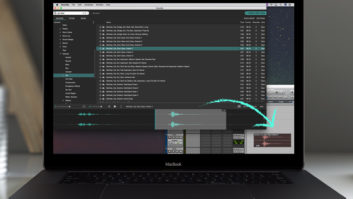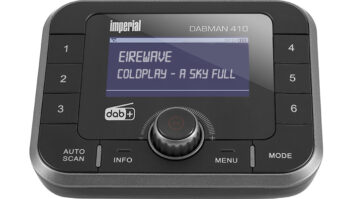Creativity takes effect
Sep 1, 2000 12:00 PM, Brian Sanders
Just which station is responsible for creating the first production room has probably been lost to history. No doubt it was conceived and perhaps constructed following a maintenance catastrophe that paralyzed the primary control room. A second studio, configured much like the main studio, then became a standard design feature of radio stations.
Because these second studios were set up as backup air studios, they used essentially the same equipment and had similar recording, playback and mixing philosophies. Eventually, the basic equipment would include the common audio recorders and players of the day but little else beyond microphones.
By the late ’70s, production studios began to depart slightly from the traditional duplicate studio model. One difference is the inclusion of signal processing. No longer simply a duplication of the air studio, today’s production facility has almost as much in common with a recording studio as with the broadcast booth.
Practical processing Signal processing has come a long way in the past 30 years. My 1969 edition of Tremaine’s Audio Cyclopedia has a section on equalizers but makes little mention of other outboard devices, such as compressors and artificial reverb or echo.
A discussion during an NAB2000 seminar is a case in point. The moderator queried the audience about the technology they had used in the past. Most recalled that it was the early ’80s before almost any outboard equipment, such as reverb, EQ, compressor/limiters or other signal processing infiltrated their production rooms. At the time, these devices were commonplace in the recording industry but not in radio broadcast. They were often bulky, expensive and hardly the type of equipment a bottom-line oriented station manager thought necessary.
By definition, an audio processor manipulates the waveform in some manner. Whether by analog or digital means, characteristics such as amplitude and frequency response can be shaped and modified to achieve the desired sonic effect. Musical pitch and tempo can be altered for a performance that is closer to perfection. Even subtleties such as mic selection and the reverberant field are now digitally controllable.
Why should we change the sound in the first place? There are two answers to this question: problem solving and station identity. The station with the best sound on the air has the best chance of attracting an audience and keeping it. The station that chooses to put better production on the air, broadcast better-sounding news actualities and maintain a more consistent level of audio quality has a step up on the competition.
When to process At nearly all radio stations, much program content is delivered from sources outside of the radio station in forms such as recorded music, commercial or promotional announcements and network feeds. The production of these elements is often carried out using the finest mics and processors. The local producer, therefore, must have similar tools available to avoid poor-sounding audio by comparison. A good room environment and microphone combination are essential, but additional help may be called for.
Voice processors have become common in air and production studios. Their function is to enhance the voice by controlling dynamic range and equalization. If an announcer tends to accent some words and drop others, the internal compressor will compensate for these variations in level. Excess vocal sibilance will benefit from the corrective EQ or de-essing circuitry in a mic processor. With the right EQ setting, a basic mic can sound better than it should. The right setup on the compressor can help hide room noise, such as that from the computer. Some processors include a means of linking units or controlling them externally through sidechains. Some mic processors allow external control of their compression function, which is especially handy in a talk format: the host mic can be set up to automatically lower the gain on the guest mics during a moment of controversy. (For more on talk-show technology, see Let’s Talk, July 2000 BE Radio, pg. 28.) Many all-in-one mic processors go beyond multi-band equalization and dynamic range control to provide phantom power, phase reverse, dual-channel operation and other features.
One of the goals in the production studio is to make sure the final project attracts attention as intended. What good is a commercial no one notices? Enter “special effects” – sounds so unnatural they immediately attract the ear. Experimentation (also known as messing around) resulted in all manner of new sounds, from electric lasers, to Santa’s elves and Darth Vader. The first generation flangers, chorus, reverbs and delays were often packaged as separate units. Some were originally designed for electric guitars but pressed into service in the production studio. Today, these effects processors are commonly combined into one integrated unit and include compressor/limiter functions, reverb, delay and EQ. Most ship with preset off-the-rack sounds, but they allow the user to create and store custom effects. Price points for these devices are as wide-ranging as the number and sophistication of the sounds available.
One of the oldest effects processors is the equalizer. Its original use was to match the frequency response of telephone lines or loudspeaker system to “equal” or flat response for more accurate reproduction.
A graphic equalizer is a collection of tuned filters that can boost or cut a particular range of frequencies. Human hearing has about a 10-octave range. Equalizers are usually described generically in terms of the number of frequency bands the unit has or how the sections are divided. A 1/3-octave EQ, for example, divides each octave into three parts.
In production, an equalizer can be used not only for special effects but also as a problem-solver. For instance, your field reporter has just called in a breaking story, but the feed has a mysterious hum. Using a graphic and your ears, you can determine which band of frequencies contains the hum. By reducing the level of the offending frequencies, you bring down the hum, making the reporter more easily understood. However, because the graphic works in fixed bands of frequencies, a more precise EQ may be called for.
The parametric EQ divides the spectrum into three or more frequency bands. The user first determines a general range for the individual band and adjusts for a center frequency. Second, using the bandwidth control, or Q, the user adjusts for the desired range of frequencies above and below the center. Boost or cut is applied as necessary. The strongest of these equalizers is called a notch filter and can be set to control a very narrow bandwidth.
The least glamorous production tool is the compressor/limiter. Compressors reduce the overall dynamic range of a source to prevent overloads and improve intelligibility or musicality. The operator sets the compression ratio. This means a signal of a given level may increase by several decibels, but the compressor will only allow a slight increase at its output. Above a certain threshold, the signal is completely limited; there is no output increase. The operator has additional controls for attack and decay, which are useful in musical situations where a misadjustment would cause distortion. Compressor/limiters are commonly used on individual voices or instruments in a mix, or as overall program limiting inline ahead of a recording device or transmitter.
When a commercial spot ran a little long in the analog production studio, you either did it over or fudged the label and hoped no one caught on. If a variable-speed tape recorder was available, you could try to crank up the speed a little and hope not too much of the dreaded chipmunk effect resulted. (A producer with access to a pitch shifter could pull the pitch back down for the final dub, but before digital equipment was common, quality pitch shifters were very expensive.)
Computer-based hard-disk editing systems have revolutionized radio production. They can help fit 63 seconds of production into a space of 59 seconds. Software programs emulate nearly everything in the previous generation production studio, from multitrack tape recorders to razor blades.
The leading software programs for disk-based audio recording typically ship with basic effects packages, including time-compression tools for the above problem. Add-on options, called plug-ins, provide additional signal-processing capabilities. Plug-ins can be provided from the original editor manufacturer or from third-party manufacturers. Many digital music software – on both Windows and Mac platforms – accept these after-market applications, which offer the same functional flexibility that traditional hardware users enjoy.
Many plug-ins emulate effects available only in hardware packages that cost many times the cost of the software. The current generation of plug-ins takes processing to a higher level, creating processors without parallel in the analog or hardware world.
Third-party plug-ins can be written for use with several programs. This is done by using an open format source, such as Microsoft’s Direct-X for PCs or Steinberg’s VST for PC or Mac. There are many other formats as well, some are not as common and may not offer as many third-party DAW choices. An editing program’s ability to support plug-ins can provide additional flexibility for the future.
A number of software suppliers offer processors designed to remove hiss, background noises such as traffic, HVAC, or unwanted artifacts from the recording process. These processors typically work by sampling and then phase-reversing a portion of the offending sound. On the other side of that coin, some plug-in programs add noise back in to recreate the characteristics of analog tape recording or vinyl (33-, 45- or even 78 rpm) or to mimic the natural reverb of a particular concert hall or studio.
Analog, digital and software-based processors are essential in the well-equipped production studio. Of course, it takes a creative producer to bring out the best in your station. In some areas, talent like this is in short supply.







